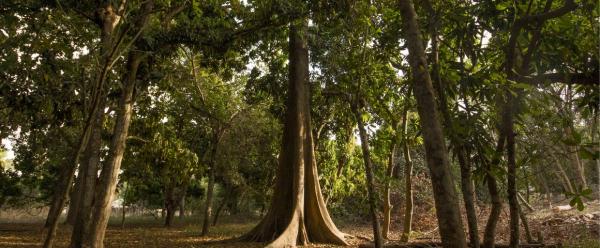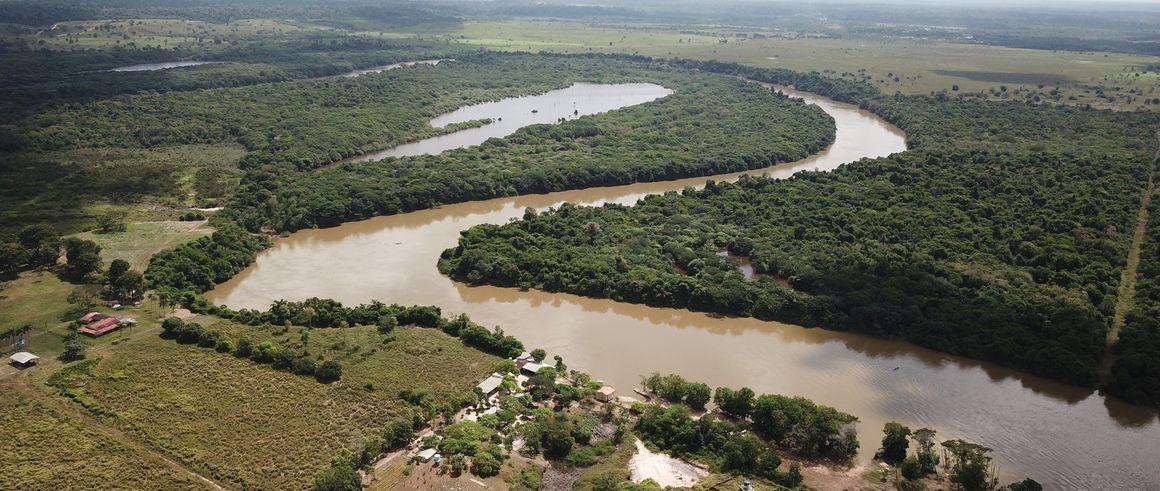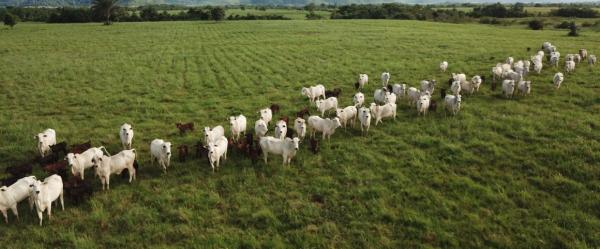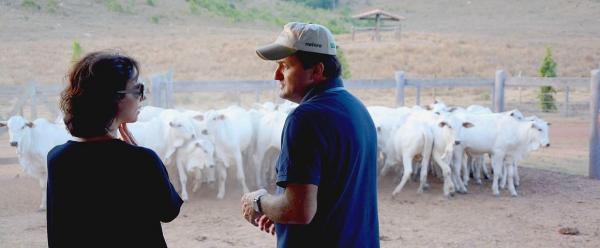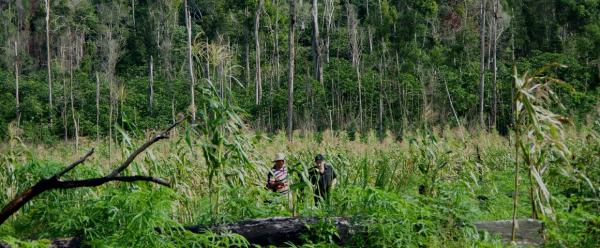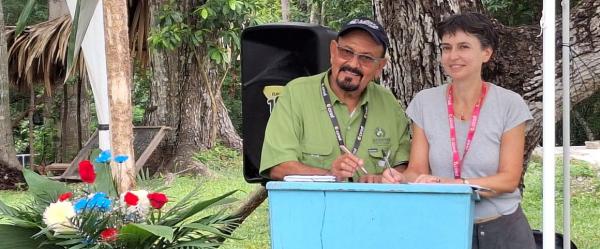CIRAD scientists and their partners are working in the Amazon to steer and support initiatives on the part of territories that combine sustainable crop and livestock farming, social inclusion, and forest ecosystem conservation and restoration. Under the umbrella of projects such as TerrAmaz and of partners networks such as the Amazonie platform in partnership - structured around the regions of Pará, Amapá and Mato Grosso in Brazil, French Guiana, Guaviare in Colombia and Madre de Dios in Peru -, they are working to foster the agroecological transition, to build responsible agricultural and forestry value chains that respect ecosystems' capacity for renewal. CIRAD is also involved in the Science Panel for the Amazon, a network of more than 250 scientists from various fields.
Rethinking forest management
CIRAD has been analysing data on how the Amazon forest ecosystem functions for more than 30 years, in the hope of understanding the effects of logging and the forest's capacity to regenerate itself in the light of climate change. It coordinates an international network of sites monitoring tropical forest dynamics (TmFO), comprising 30 experimental sites, 17 of which are in the Amazon, across 12 countries (Bolivia, Brazil, Guyana, French Guiana, Peru, Surinam, Central African Republic, Gabon, Ivory Coast, Malaysia and Indonesia).
The TmFO's results show that natural forests alone, 20% of which are logged in the Amazon, will be unable to satisfy the demand for wood in the long term. For Plinio Sist, Head of CIRAD's Forests and Societies research unit, "we need to effect a real forest transition aimed at setting up other production systems on already degraded land by planting and by managing secondary and degraded forests". The current trend for restoring landscapes by planting forests (Bonn Challenge, UN Decade on Ecosystem Restoration) is a unique opportunity to trigger that forest transition. "Encouraging forest management by communities and smallholders can also help to conserve existing forests while generating income for the local people in charge of managing their forest resources", he adds.
More and more parties are committing to fight the destruction and degradation of forests, but despite this trend, the pressure on such ecosystems remains strong. What if one solution were to restore forest landscapes? Is it possible, in such areas, to reconcile biodiversity conservation and timber production? As the European Union tightens the regulations on imported deforestation, what role could certification of products such as cocoa, soybean and palm oil play?
Restoring forest landscapes by integrating agriculture
CIRAD and its partners are steering ambitious forest landscape restoration programmes in several parts of the Brazilian Amazon historically affected by deforestation, such as the municipes of Paragominas and Cotriguaçu, the Nordeste region of Pará state in Brazil and Guaviare in Colombia. Scientists, managers and foresters are working with the intrinsic characteristics of landscapes, such as relief and water resources, to structure the synergies between ecological intensification of crop and livestock farming on the one hand and forest conservation and restoration on the other. "Redesigning landscapes to include cultivated and forest areas will lay the foundations for the sustainable development of these Amazonian territories", René Poccard-Chapuis, a geographer from CIRAD, stresses.
Reconciling agriculture and forests was the commitment made by Brazil in the 2015 Paris Agreements, with a promise to restore 12 million hectares of forest by 2030. Colombia, for its part, committed to restoring a million.
Since then, interest in restoration has gone beyond forests alone, shifting towards the concept of more complex patchworks in which forests are one of the defining elements of multifunctional landscapes.
"The Refloramaz project, for instance, has mapped more than 400 initiatives in the Nordeste region of Pará, Brazil. Some 78% of the farmers surveyed have practised restoration by means of agroforestry", says Emilie Coudel, a socioeconomist from CIRAD.
Investing in agroecology and value chains that promote biodiversity and balanced landscapes
Within Amazonian agro-ecosystems, agricultural production can be more virtuous than elsewhere in environmental terms, thanks to agroecology.
Agroecological management of grazing land, for instance rotational grazing, in balanced landscapes, serves to produce beef with a positive carbon footprint while preserving, and even increasing the area of forest: the amount of carbon stored in the soil on grazing land and in restored or protected forests can exceed the emissions from livestock.
In Brazil and Colombia, three territories are helping livestock farmers manage their farms sustainably. As a result, productivity per hectare is up, forests have been conserved and areas have been left fallow or partly replanted. In the municipality of Paragominas, the return of trees has triggered a positive dynamic centring on drinking water and improved relations between rural and urban areas.
The aim is also to work with farmers to organize rural communities and agricultural advice services and synergies between different plant species, in which "service" plants support commercial crops, for instance by fertilizing the soil, improving pollination or smothering weeds. Encouraging farmers to grow cassava, which is so common in the Amazon, without resorting to burning, or setting up efficient agroforests and agroforestry systems (cocoa, cashew nuts, açai palms, etc), and corresponding value chains, will require this type of agricultural engineering, in which innovation and tradition are interlinked, and in which biodiversity is an effective resource.
CIRAD and its partners are aiming to foster the dynamic triggered by the Açai’action project (Surinam, Brazil and French Guiana), by boosting the independence of economic players in value chains that promote biodiversity in the territories concerned and by opening up collaboration to other countries in the Amazon Basin such as Guyana and Colombia.
Lastly, to fund the agroecological transition, CIRAD is working with local and regional financial institutions to develop green funding schemes. The instruments suggested include verification and monitoring, stakeholder training, communication and transparency systems. The "green husbandry" loan launched with Banco da Amazônia in 2021 is one example.
In the Amazon, it is possible for natural forest and its biodiversity to co-exist with profitable, low-GHG livestock farming. How? By ensuring that cattle graze in the right place, at the right time. This means a change in habits for most farmers, but one that can be funded by means of a "Pecuária Verde" (Green husbandry) loan, an experimental scheme launched by Banco de Amazônia and CIRAD.
Putting the shared governance principle into practice
These various operations are being conducted in a spirit of shared governance, to ensure that all the stakeholders feel that they are playing their part in socio-environmental change and take part in the decisions that will guarantee an equilibrium between economic activities and conservation. CIRAD and its partners are fostering and supporting the establishment of information and consultation facilities such as citizen observatories, forums and discussion platforms.
To promote territories making these types of efforts and make them attractive to responsible investors, CIRAD and its partners are drafting new certification schemes such as territorial certification in Paragominas, Brazil, which was built hand-in-hand with local people
Similarly, "in Peru, the work coordinated by CIRAD has served to make the process of developing a territorial brand in Madre de Dios more inclusive", says CIRAD's Marie-Gabrielle Piketty, TerrAmaz project coordinator.
Forest restoration, sustainable livestock production practices, social inclusion, diversification of agricultural income sources, water quality, and so on... Paragominas, a municipality in the heart of the Brazilian Amazon, has had a string of environmental, social and economic successes. To support and sustain this trend, public-sector players are keen to attract responsible investors by means of a new instrument: territorial certification.
